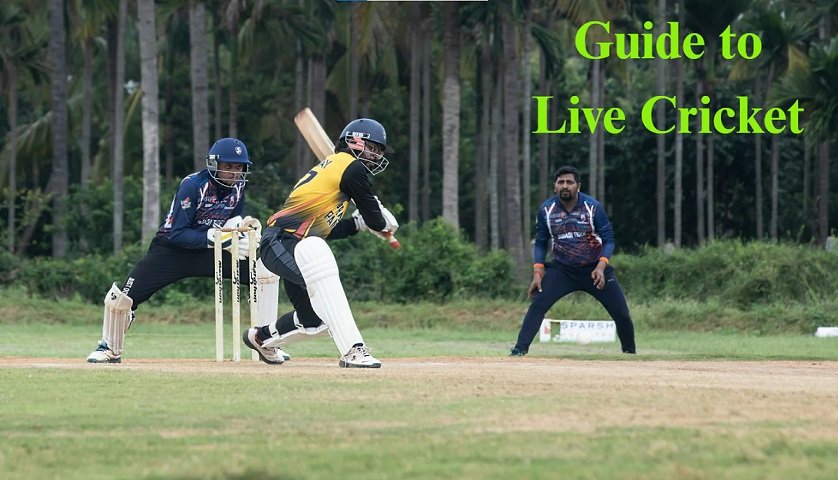Live cricket rewards steady attention. Scores climb, fields shift, and a single change of pace can reset the chase. A clear view helps the mind follow what matters – runs left, balls left, and who faces the next over. With a simple setup and a few reliable cues, a match becomes easy to read and even more enjoyable.
Good habits start before the toss. Set one screen for the live feed and one for notes or messages. Keep the view stable so eyes land in the same places each time. Plan to check the state at natural pauses – over breaks, drinks, and wickets – not after every ball. Guide to Live Cricket
The three numbers that shape every decision
Most match talk gets loud because the basics get lost. Keep the core simple. First, the run rate – current and required – tells whether the batting side can play risk-light or must press. Second, wickets in hand signal how brave a captain or batter can be. Five down with ten overs left is not the same as seven down with four. Third, balls remaining lock the rhythm. Forty balls allow structure and strike rotation. Twelve balls demand clarity – who hits which bowler and where.
These three numbers can be represented in any format. In T20, they anchor the last five overs. In ODIs, they govern the middle where smart sides bank quiet tens and pick their battles. In Tests, they speak during fourth-innings pursuits – patient footprints when the pitch is wearing, quick sprints when light is fading.
Set your live view for calm reading
A steady layout prevents panic when momentum swings. Fix your eye on a view where score, wickets, balls, and rate sit in the same places every time. Keep context near the numbers – who is bowling, field type, and strike left or right. Use a live feed that stamps updates with time and labels changes plainly. For ball-by-ball context with clean cues during busy match nights, keep this website open alongside the broadcast – it helps the mind check the state at a glance and return to the over with confidence.
Motion should stay gentle. A quiet tick on an update is enough. Confetti or bouncing digits drain attention. Captions that use short lines and en dashes read like a calm commentator – “Grip returning – mid-on comes up” says more than a paragraph of hype. This tone protects clear thinking when the crowd gets loud.
Mid-innings toolkit – a short checklist for smarter watching
- Name the surface – holding, skidding, or true. Plan shots and fields around that call.
- Track the handoff – who will face the next 10–12 balls and which matchup that creates.
- Watch lengths – fuller balls under lights often skid; back-of-a-length grips on tired decks.
- Spot leverage – powerplay ends, fresh ball spells, and the first over at the death change value fast.
- Confirm the window – look at last-five-over pace, not only the full-innings rate, before judging a chase.
A single list keeps focus steady. Read it during breaks. Then let the match breathe.
Fields, angles, and weather – how the little things tilt the story
Field settings reveal intent. A ring that tightens after a quiet over says the bowling side feels the deck is helping. Two catchers in front of the square to a new batter invite the inside edge. A deep third with a square cover tells the captain fears the slice more than the punch. Watching these small shifts turns a mystery catch into a predictable plan.
Angles matter. Left-arm over to a right-hander closes the cover gap and opens the glide to third. Around the wicket can pin a right-hander and drag edges to the cordon. Batters who sweep early against a tall off-spinner are often calling the length slow – they want to move the field rather than hit through it. These reads help viewers predict where the next risk sits and why a captain guards one rope, not both.
Weather and light change the ball. Dew simplifies chasing – the ball skids, and the slower ball stops gripping. Afternoon breeze can revive wobbles in the seam just enough to lift the splice for ten minutes. Cloud and new lacquer make the first five overs honest work for any top order. Treat these conditions as a living context, not excuses. It keeps debate grounded and makes praise land where craft earned it.
Batting plans that travel – from powerplay to death
Opening phases reward strike habits – clean drops and sharp singles when fields are up, plus one calculated option to clear mid-on or mid-off if the length allows. If two overs bite, reset goals. Protect and collect – sixes can wait for the next ball that fits the plan. Set batters in the middle overs earn the right to pick a partner over and press. Tailenders benefit from simple rules – defend through the hard length, swing only when the field gifts the gap.
Death overs need a map. Batters should know the two shots that survive a miss – hard length pull or square-drive glide – and the one they will not chase. Bowlers win by selling one story and bowling the other – wide yorker shown, hard length served; slower ball shown, ripping bouncer delivered. A live view that shows pace and length summaries every few balls makes these plots visible without guesswork.
When analytics help – and when they get in the way
Numbers teach when they match the moment. Expected runs over the next two overs help a captain set fields. A hot-zone map for a set batter helps decide between leg-spin and seam. Yet, numbers can also shout. A single spike in the last-over worm is noise if nine deliveries before it were quiet. Trust the median over the outlier. In live talk, short tags beat heavy jargon – “length dragging,” “grip back,” “pace off working” – because they match what batters and bowlers feel.
Clarity also depends on language access. Regional captions that name conditions plainly lift understanding across the stand. A Tamil or Marathi line stating that the ball is sticking on a length guides better than generic adjectives. When why becomes clear in words that fit the crowd, arguments cool and plans sharpen.
Extra time well spent – habits that make fans and teams smarter
Teams use clean live labels to build better reviews. Bowlers compare wrist position when the seam finally bites. Batters mark the over where the trigger drifted open. Fitness staff tag spells by effort – sticky new ball work is not the same load as flat-deck cleanup – and rotate smarter. Broadcasters benefit, too. Honest clocks, fixed anchors, and reason tags teach new viewers how the game breathes. Kids in the stand copy that tone – fewer superlatives, more reads.
Fans can keep small notes that travel from series to series – which grounds dew late, which venues wake up in the evening breeze, which bowlers hold length under lights. A pocket log turns memory into method. The next match starts clearer because the last one left a map.
Last over – a match that teaches while it thrills
Cricket is rich because one ball can change the mood without changing the method. Keep the view steady. Read the three basics first. Add context in short lines that respect the over’s rhythm. Use a live feed that stamps time and explains changes so thinking stays ahead of the next ball. Under that setup, even a tense chase feels legible – not a blur, but a pattern the eyes can follow and the mind can trust.



